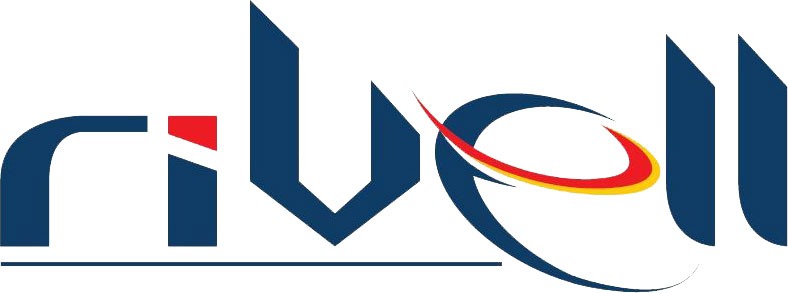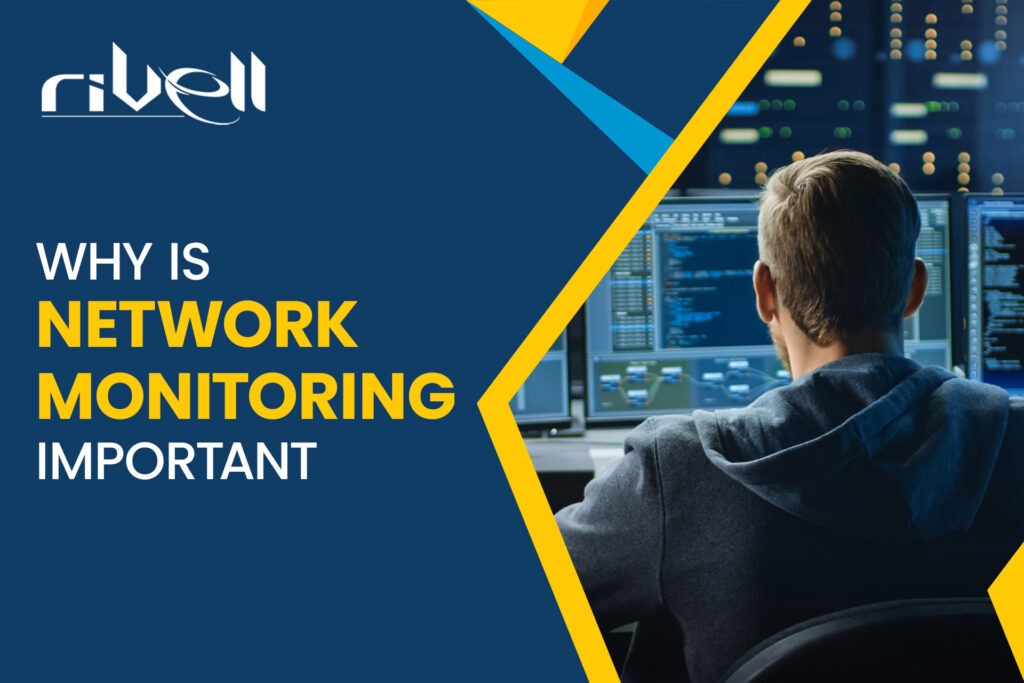What is network monitoring
Network monitoring is a critical process in information technology that involves the continuous surveillance, analysis, and management of a computer network’s performance, health, and security. It encompasses a range of activities and tools designed to ensure the seamless functioning of networked systems, identify potential issues, and enhance overall efficiency.
According to MarketsandMarkets, the Network Monitoring Market is projected to grow from USD 2.2 billion in 2022 to reach USD 3.0 billion by 2027; it is expected to grow at a Compound Annual Growth Rate of 6.9% from 2022 to 2027.
Key Components of Network Monitoring
Network monitoring is the heartbeat of a robust IT infrastructure, ensuring the seamless flow of data, identifying potential issues, and safeguarding against security threats. Let’s delve into the essential components that make up the intricate tapestry of network monitoring.
1. Traffic Analysis: Decoding Data Flow
Traffic analysis involves the meticulous examination of data as it traverses through a network. It’s about understanding the patterns, volumes, and destinations of the data flow.
By dissecting traffic, administrators gain invaluable insights. They can identify bandwidth bottlenecks, detect anomalies, and optimize network performance. Traffic analysis is the compass that guides efficient data navigation within the network.
2. Performance Monitoring: Nurturing Network Health
Performance monitoring is the vigilant oversight of network devices such as routers, switches, and servers. It involves tracking metrics like bandwidth utilization, latency, and response times.
Network health is akin to the vitality of a living organism. Performance monitoring ensures that the components of the network are operating optimally. Early detection of deviations from normal performance allows for proactive interventions, preventing potential disruptions.
3. Security Monitoring: Sentinel Against Threats
Security monitoring is continuous surveillance designed to detect and respond to potential security threats, unauthorized access, and any aberrations that may compromise the network’s integrity.
In an era where cyber threats loom large, security monitoring stands as the sentinel against malicious activities. It is a proactive shield that identifies and neutralizes threats in real-time, safeguarding sensitive data and preserving the trust of users.
4. Fault Detection: Swift Response to Hiccups
Fault detection is the mechanism that identifies and addresses issues within the network, ranging from hardware failures to connectivity disruptions and other operational malfunctions.
The digital landscape is not immune to hiccups. Fault detection ensures a swift response to issues, minimizing downtime, and maintaining uninterrupted operations. It’s the troubleshooter that keeps the network resilient and reliable.
5. Capacity Planning: Anticipating Future Demands
Capacity planning involves analyzing current network usage patterns to anticipate future demands. It’s about ensuring that resources are allocated optimally to meet the evolving needs of the network.
A network is a dynamic entity, and anticipating its growth is crucial. Capacity planning prevents issues related to insufficient resources, allowing for seamless scalability. It’s the foresight that ensures the network is ready for whatever the future may bring.
Why is network monitoring important
Network monitoring is important because it proactively identifies and resolves potential issues, minimizing downtime and ensuring uninterrupted operations. It enhances cybersecurity by serving as a vigilant sentinel, detecting and responding to threats in real-time, safeguarding sensitive data and preserving the integrity of the network.
In the intricate web of the digital landscape, where every click and communication are a heartbeat of modern businesses, network monitoring emerges as the silent guardian, ensuring the seamless flow of information and safeguarding against potential disruptions. Let’s delve into the profound importance of network monitoring, unraveling its layers and understanding why it is a non-negotiable aspect of contemporary IT infrastructure.
1. Proactive Issue Resolution: Anticipating and Preventing Hiccups
Networks are dynamic ecosystems, prone to occasional hiccups. Network monitoring acts as a vigilant guardian, constantly scanning for irregularities and potential issues. By identifying and addressing problems in their infancy, network monitoring allows for proactive interventions, minimizing downtime and disruptions to business operations. It transforms the reactive firefighting approach into a proactive strategy, ensuring a resilient and reliable network.
2. Enhanced Security: A Shield Against Cyber Threats
In a digital era where cyber threats loom large, the importance of network monitoring in bolstering cybersecurity cannot be overstated. Security breaches and unauthorized access can wreak havoc on an organization’s sensitive data and compromise its integrity. Network monitoring serves as a sentinel, tirelessly watching for unusual activities, potential security threats, and unauthorized access. Through real-time surveillance and rapid response, it fortifies the network’s defenses, protecting against cyber threats and preserving the trust of users and stakeholders.
Read More : Common Network Security Threats and How to Defend Against Them
3. Optimized Performance: Keeping the Pulse of Network Health
The performance of a network is akin to the heartbeat of a living organism. Network monitoring plays a pivotal role in maintaining optimal performance by continuously assessing key metrics such as bandwidth utilization, latency, and response times. By keeping a finger on the pulse of network health, administrators can identify bottlenecks, optimize resource allocation, and ensure that the network operates at peak efficiency. This enhances user experience and contributes to the organization’s productivity and effectiveness.
4. Resource Optimization: Informed Decision-Making for Scalability
Understanding how network resources are utilized is crucial for making informed decisions regarding upgrades and scalability. Network monitoring provides detailed insights into resource usage patterns, allowing organizations to plan for future growth. This capacity planning ensures that resources are allocated optimally, preventing issues related to insufficient resources and paving the way for seamless scalability as the organization evolves.
5. Compliance Requirements: Meeting Regulatory Standards with Confidence
In many industries, adherence to regulatory standards is not just a best practice; it is a legal requirement. Network monitoring plays a vital role in meeting these compliance requirements by providing detailed insights into network activities. This transparency not only ensures that the organization operates within the bounds of the law but also helps in demonstrating due diligence and accountability.
6. Cost-Efficiency: The Economic Impact of Network Monitoring
Network outages and security breaches can have significant financial implications for an organization. The cost of downtime, data breaches, and reputation damage can be substantial. Network monitoring mitigates these risks by preventing and resolving issues before they escalate. The investment in robust network monitoring tools translates into long-term cost savings, making it a strategic and economically sound decision for any organization.
7. User Experience: Elevating Customer Satisfaction
A seamless user experience is paramount in today’s digital landscape. Network monitoring directly impacts this by ensuring that applications and services run smoothly. By identifying and resolving performance issues promptly, it contributes to enhanced customer satisfaction. A positive user experience not only retains existing customers but also attracts new ones, fostering the growth and reputation of the organization.
8. Data Insights: Informed Decision-Making
Network monitoring provides much data and insights into the network’s behavior and performance. This data is a goldmine for informed decision-making. Administrators can analyze trends, identify patterns, and make strategic decisions based on real-time and historical network data. This strategic advantage enables organizations to stay ahead of the curve, adapt to changing demands, and capitalize on emerging opportunities.
9. Remote Management: Navigating the Challenges of Remote Work
In an era where remote work has become the norm, network monitoring has become a crucial tool for managing and securing dispersed networks. It allows administrators to monitor the performance and security of the network from anywhere, ensuring that remote employees can access resources without interruptions. This adaptability is particularly relevant in today’s dynamic work environment.
10. Predictive Analytics: Forecasting and Preventing Issues
Advanced network monitoring tools often incorporate predictive analytics, leveraging machine learning algorithms to forecast potential issues before they occur. By analyzing historical data and identifying patterns, these tools can predict trends and potential problems. This proactive approach allows for preventive measures, reducing the likelihood of disruptions and downtime.
11. Scalability: Growing with Confidence
As organizations evolve and expand, their network needs to scale accordingly. Network monitoring provides insights into current usage patterns and helps plan for future scalability. This foresight ensures that the network infrastructure can grow seamlessly with the organization, accommodating increased demands without sacrificing performance or security.
12. Vendor Management: Optimizing Partnerships
For organizations relying on third-party services or cloud providers, network monitoring plays a crucial role in vendor management. It allows for the monitoring of service-level agreements (SLAs), ensuring that vendors meet their commitments. This oversight is essential for maintaining the reliability of services and holding vendors accountable for their performance.
Conclusion
In the fast-paced and interconnected world of modern business, network monitoring is not just a technical necessity; it is an art form. It transforms the management of digital infrastructures into a proactive, strategic, and economically sound endeavor. By ensuring the health, security, and efficiency of networks, network monitoring becomes the backbone of organizational success in the digital age. It is not just about preventing problems; it is about sculpting a network that is resilient, secure, and ready for the challenges of tomorrow.
Elevate your digital infrastructure with Rivell’s state-of-the-art Network Monitoring Solutions—proactive issue resolution, optimized performance, and robust cybersecurity. Contact us today or Call us at (856) 603- 0000









